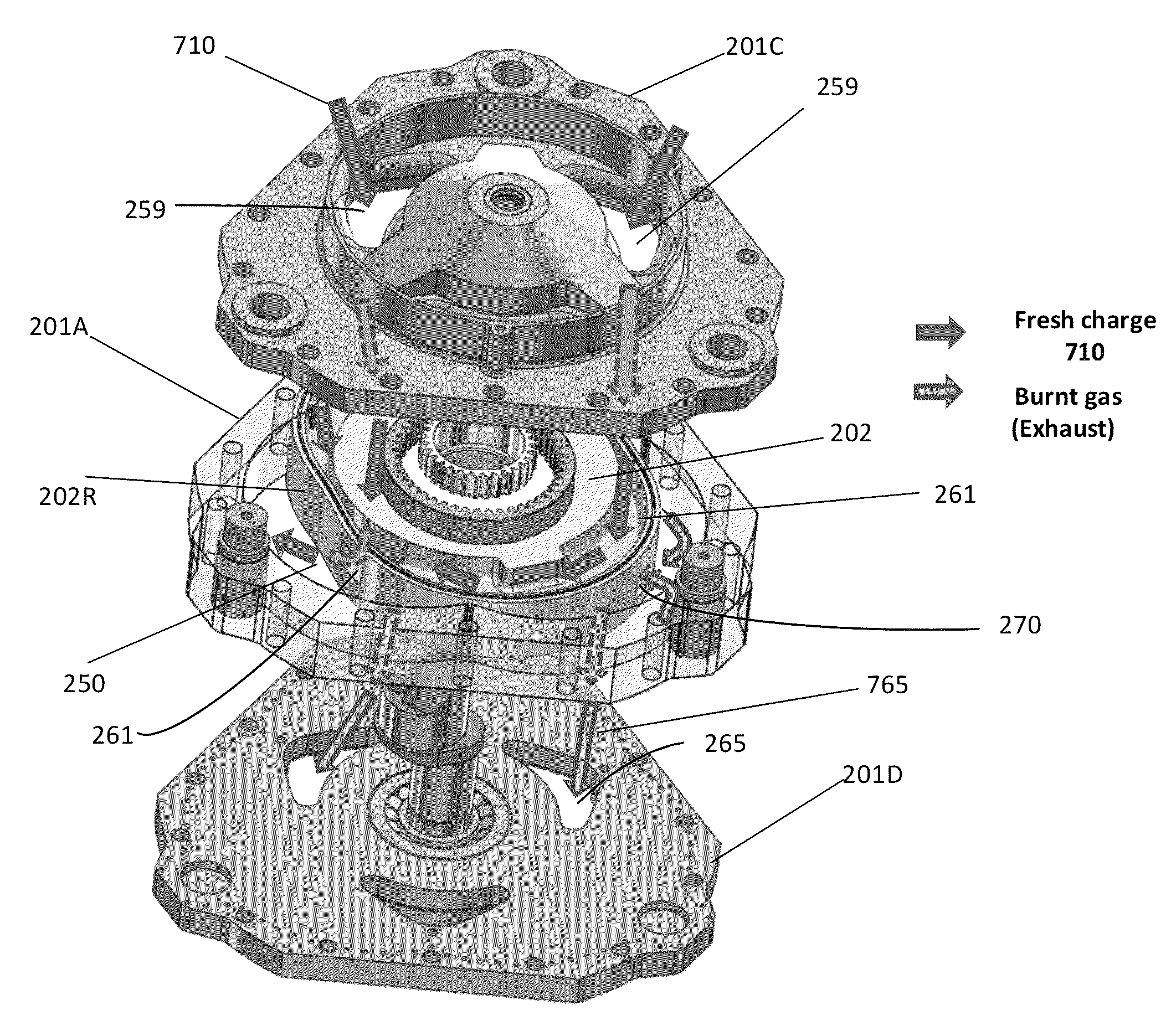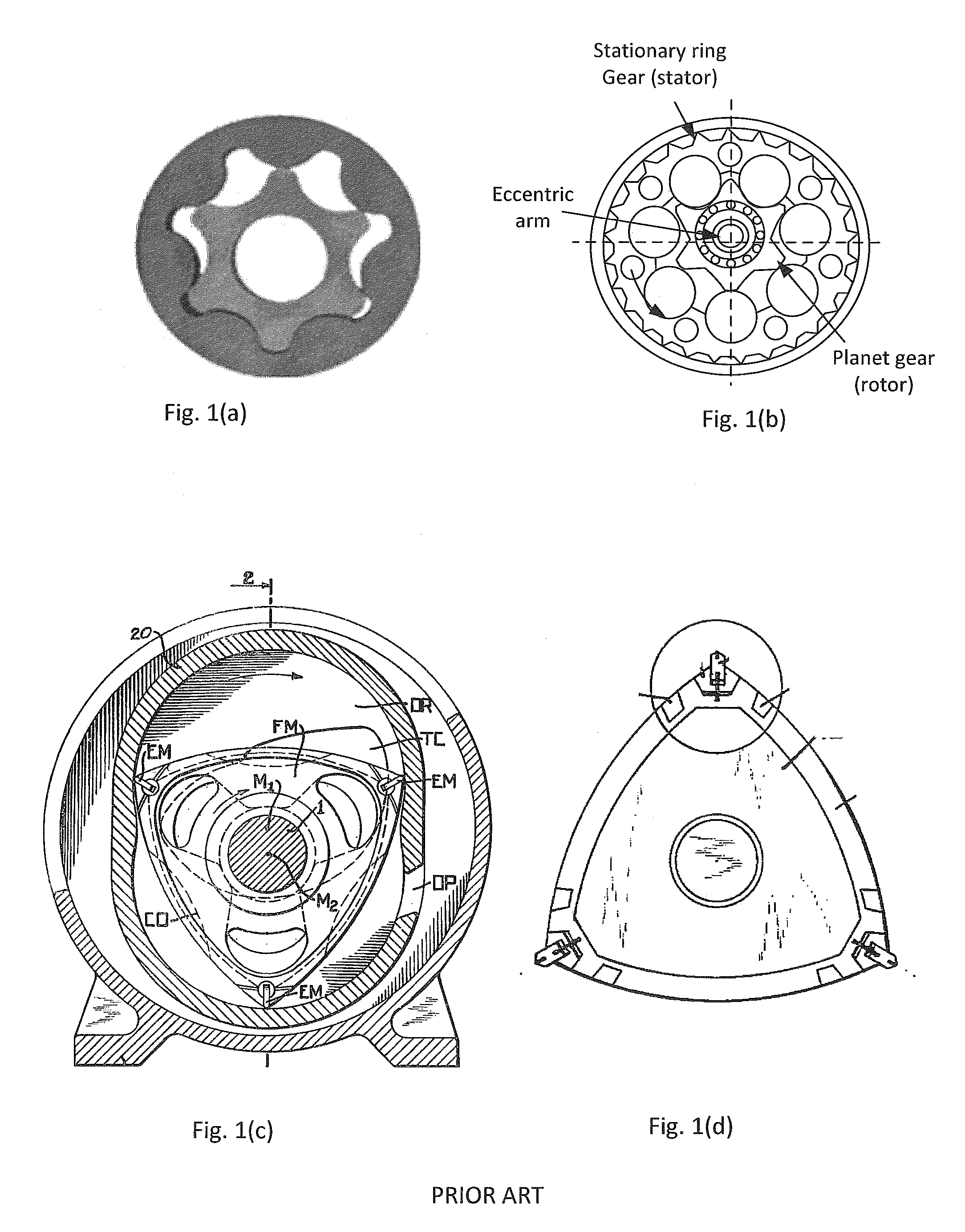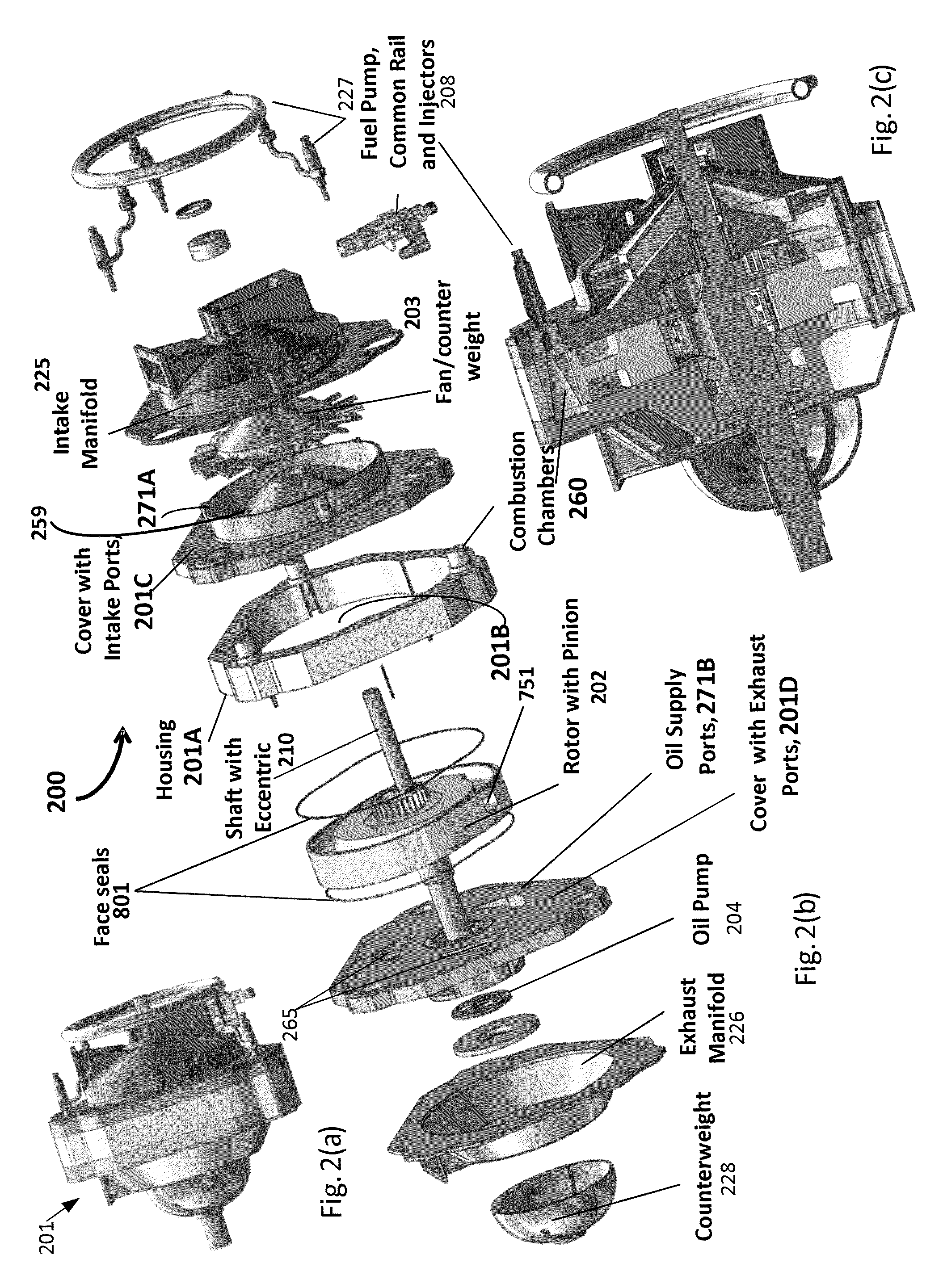Cycloid rotor engine
a cycloid rotor engine and rotor technology, applied in the field of engines, can solve the problems of difficult sealing of working fluid during compression, engine low efficiency and high emissions, and engine unsuitable for compression ignition mode of operation
- Summary
- Abstract
- Description
- Claims
- Application Information
AI Technical Summary
Benefits of technology
Problems solved by technology
Method used
Image
Examples
Embodiment Construction
[0011]In a first embodiment of the invention there is provided an improved engine of the type including a cycloidal rotor having N lobes and a housing having a corresponding set of N+1 lobe-receiving regions for successively receiving the lobes as the rotor rotates about an axis relative to the housing, the housing having (i) a pair of sides axially disposed on first and second sides of the rotor, and (ii) a peak disposed between each pair of adjacent lobe-receiving regions, and (iii) an intake port and an exhaust port, wherein the improvement is defined by: a plurality of peak seals, at least one of the plurality of peak seals disposed on each peak and configured to maintain contact with the rotor throughout a period of rotation of the rotor, each seal being radially biased against the rotor throughout the rotation of the rotor, on account of the cycloidal geometry of the rotor and the lobe-receiving portions; a first passageway defined in the rotor to communicate cyclically betwee...
PUM
 Login to View More
Login to View More Abstract
Description
Claims
Application Information
 Login to View More
Login to View More - R&D
- Intellectual Property
- Life Sciences
- Materials
- Tech Scout
- Unparalleled Data Quality
- Higher Quality Content
- 60% Fewer Hallucinations
Browse by: Latest US Patents, China's latest patents, Technical Efficacy Thesaurus, Application Domain, Technology Topic, Popular Technical Reports.
© 2025 PatSnap. All rights reserved.Legal|Privacy policy|Modern Slavery Act Transparency Statement|Sitemap|About US| Contact US: help@patsnap.com



